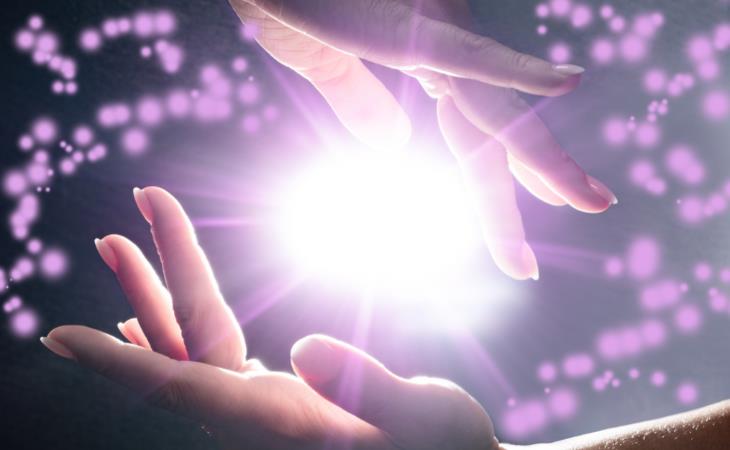
Our approach to health is both science-based and holistic. This means that, first and foremost, we believe in Western medicine, but we also think that alternative and complementary healing practices have the power to accelerate healing and act as an amplifier to Western medicine. The link between mental and physical well-being is undeniable, and our mission is to equip you with knowledge.
In this article, we will be discussing a complementary healing therapy known as Reiki. We will explain what it is, the theoretical science behind it, and how it can benefit you.

Reiki originated in mid-11th century Japan. It is based on ancient Tibetan Buddhist teachings. According to Reiki, physical or emotional impairment is linked to an abnormality in the energy bio-field. To solve this, a renewed flow of energy is needed.
The word Reiki is composed of two Japanese words: Rei, which means "God‘s wisdom", and ki, which means "life force energy" and is sometimes pronounced as chi. You may know this word from "tai chi." This is the energy that heals.
A Reiki healer acts as a channel for this energy. They are not the origin nor the source of this energy. Instead, they function as a mediator between the energy that flows in the world and the patient. Using their hands, Reiki healers transfer energy back into the body, similarly to the way acupuncture promotes the flow of energy.

In practice, a Reiki session takes up to 90 minutes. The therapist will place their hands either directly on parts of the body, or just hovering above. The treatment usually (but not always) focuses on the upper body, mostly the head, neck, and shoulders. Each pose will last 3 to 10 minutes, according to the way the therapist feels the patient’s needs. There is usually very little talking.
During the session, the Reiki healer may feel a sensation of warmth or tingle in the palm of their hands as the energy flows. The recipients may feel warmth, tingling sensations, and deep relaxation. Reiki healers explain that the energy stops flowing on its own – they do not decide how long each pose will last. Once it reaches the patient’s body, it goes where it is needed on its own.

In order to become a Reiki healer, one must go through a special initiation ceremony that will open their energetic channels. Once open, they will remain accessible for life. It is important to note that, while it is considered spiritual, as meditation is, Reiki is purely secular. You don’t have to subscribe to any belief system to reap the benefits of Reiki healing.
Reiki healing can tremendously help with mental distress and physical dysfunctions caused by it. It encourages relaxation, better sleep, improved mood, and even pain relief according to Everyday Health. It will also help accelerate healing after an operation, in conjunction with physical therapy and medication if needed.
Its purpose is to promote a healthy flow of energy throughout the body and to promote and kickstart the patient’s self-healing abilities.

Our body is constantly moving between being controlled by the sympathetic nervous system and the parasympathetic nervous system. The sympathetic nervous system activates our fight or flight response, and is in charge in a state of stress, even when we’re not being threatened. This means that the body cannot spare resources for healing and regeneration.
Once the body is back in a state of deep true relaxation, the parasympathetic nervous system takes over, allowing for rest, digestion, and regeneration – all the things you need for sound healing.
Reiki aims to restore the body to that state, in which not only the mood and sleep are improved, but daily anxiety is lessened, and blood pressure lowers.
There is a small body of research on Reiki, but studies that were conducted in the past don’t add up to create solid scientific evidence. As with every alternative therapeutic method, it depends on who you ask. There are, however, several interesting theories on how exactly Reiki heals the body and mind. We will share two of them here.
One theory relies on the electric charges in the body. Every object that runs on electricity, such as the brain and heart, has a magnetic field. According to this theory, the proximity of the healer's open energetic magnetic field to the patient’s so-called “jammed“ magnetic field has the power to fix the flow of energy, much like one car‘s engine can help jumpstart another's with cables.
Another theory suggests that there’s a basis in quantum physics. This is the study of the tiniest particles of the universe, the ones that make up atoms and visible light. They include electrons, nucleons, and photons. Photons are the particles that compose light, and just like every particle of this kind, they can be in several places at once – they can be both a wave and a particle at the same time, depending on how you measure and examine them.
Some studies suggest that these particles can be influenced by thought or intention, which is what the Reiki healer does, according to the theory. Reiki healers simply gather and re-organize energetic quantum particles in the recipient's body.
There is a whole history and symbolism to explore in the world of Reiki, far too much to contain in one article. But to conclude, we will share the five Reiki principles, as practical mantras you can take with you on your daily healing journey.
1. Just for today, do not worry.
2. Just for today, do not anger.
3. Just for today, be humble.
4. Just for a day, be honest.
5. Just for today, be compassionate toward yourself and others.
This wording promotes a slow and steady movement throughout life. Taking it day by day, and honoring the present.